Seven steps you can take now.
In light of the murder of George Floyd in Minneapolis, this series of posts explores how Jesus’s teaching and example call us to reach out across racial lines to respond compassionately to unjust suffering in society.
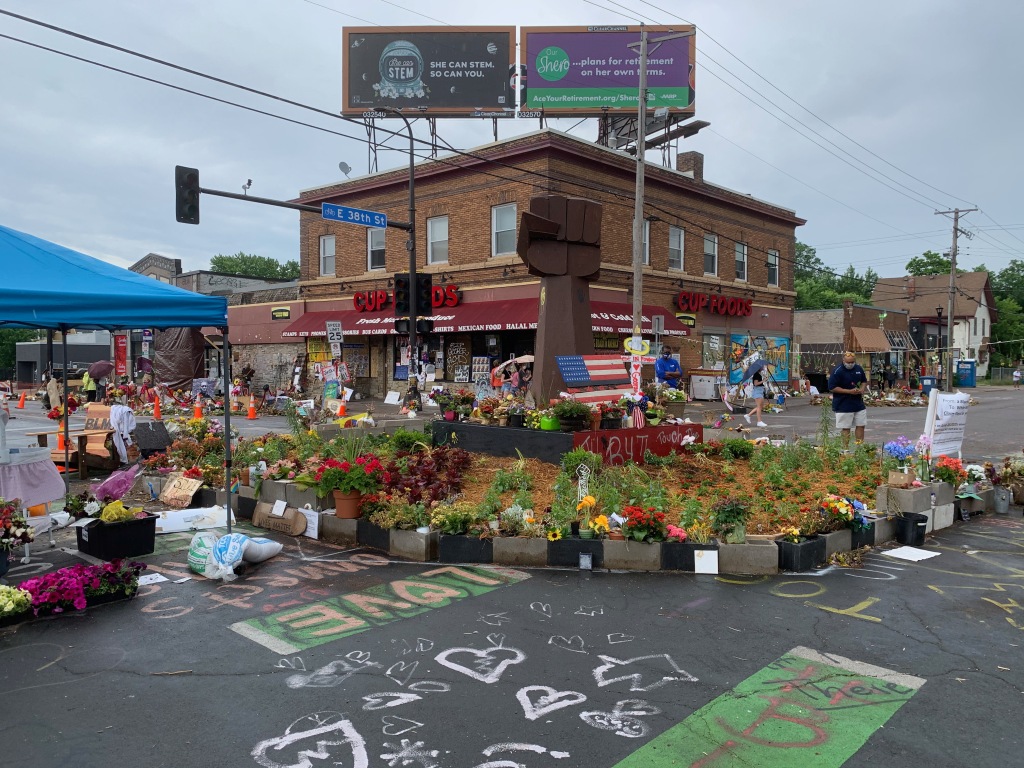
I started feeling emotion the moment I began walking up 38th Street. I could see the memorial site just ahead on the corner. Flowers, placards, graffiti, and personal notes were everywhere. There was so much to take in. I could feel the grief, rage, and despair hanging thickly in the air.
When I reached the place on the pavement, where George Floyd gasped for his final breaths, begging for his life and calling for his mama, tears came to my eyes. I could feel anger well up within me. This killing was so wrong. How could someone who was hired to “protect and serve” the community, callously, slowly, choke the life out of a subdued, handcuffed suspect, lying on the ground?
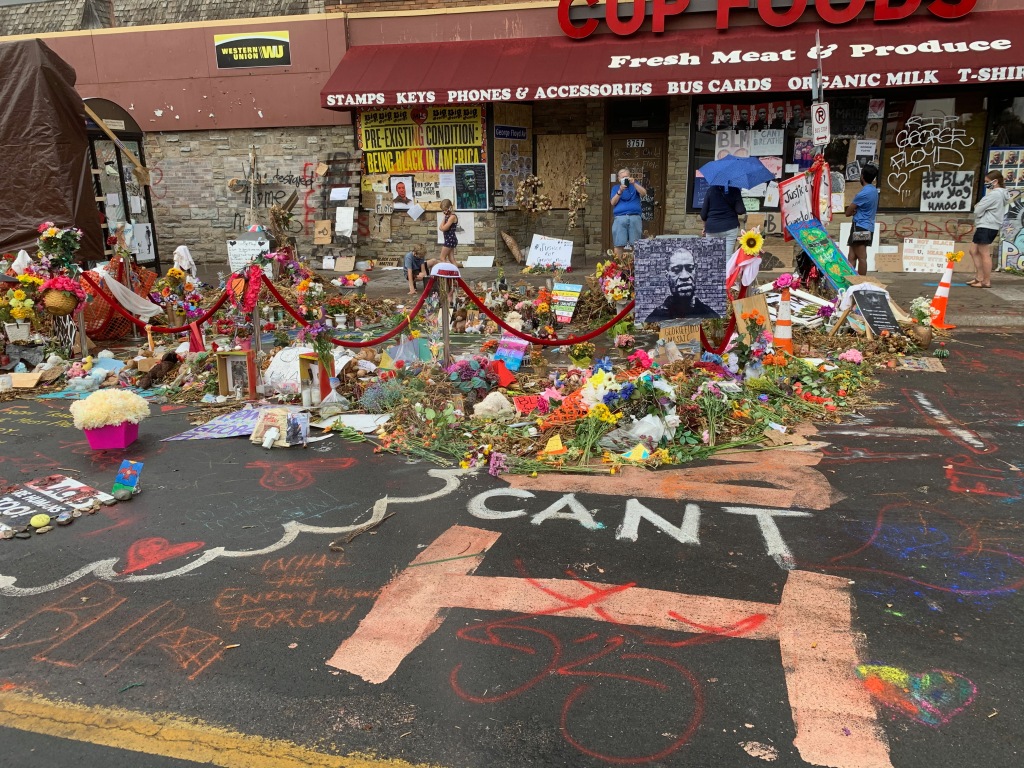
The vast majority of police throughout the country do not harass, let alone kill, people of color; but the bad ones have given rise to fear, rage, and despair among many African Americans nationwide. Much of the graffiti and signage seethed with anger at the police.
Just to the north of where George died, well over a hundred names are painted in multi-colors on Chicago Avenue, memorials to black people who have died at the hands of police in recent years. George’s killing by a white policeman wasn’t the first time. Though such killings are relatively rare (according to statistics), what happened to him has happened to others. And the perception (rightly or not) of police bullying and brutal treatment was widespread enough to strike a nerve in urban communities across the country.
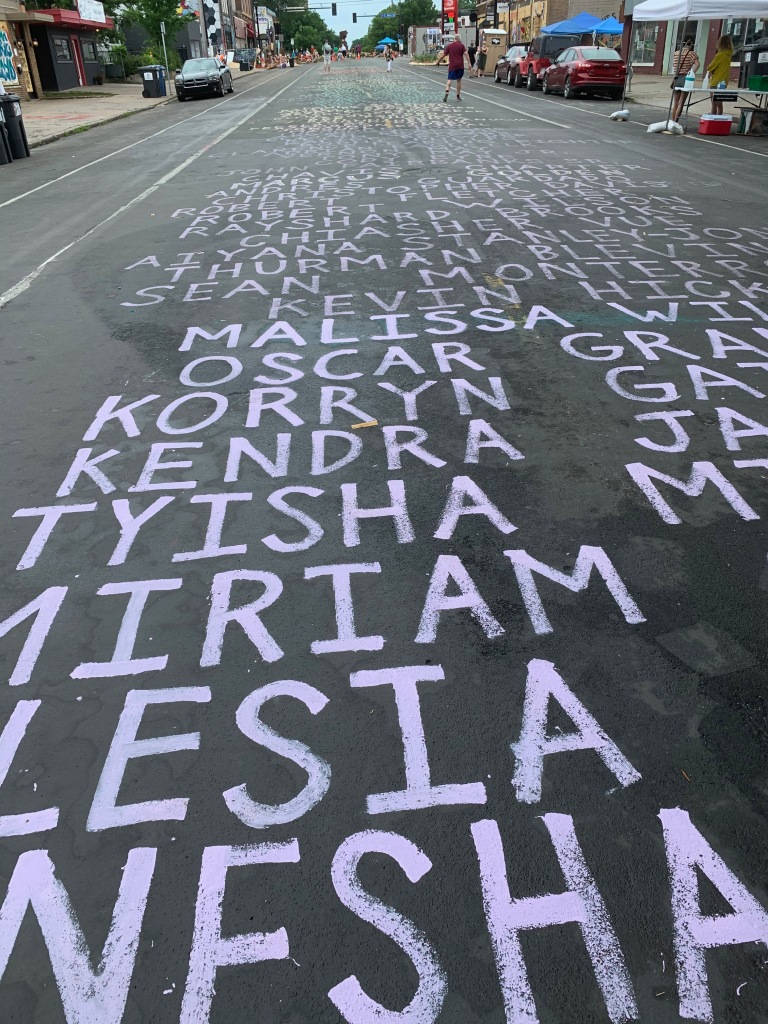
George’s now famous plea, “I can’t breathe. I can’t breathe,” has become a rallying cry for black protesters. A recent New York Times article indicated that at least 70 other people of color over the past decade have died in police custody, crying out that they couldn’t breathe before they died. Songwriters, rappers, and activists throughout the country are saying, this is what it feels like to be black in America—we can’t breathe.
How many black people feel this way? What does the average black person feel when a police car drives by or when they are stopped on the road? I don’t think anybody really knows. It may not even be the majority of people of color, but it is a sizable minority. A 2015 Gallup poll indicates that more blacks, nationally, believe the police treat minorities fairly than unfairly, but the numbers are very close (52% vs. 48%, respectively).
These statistics should make us pause before demonizing the police or assuming that the police should be abolished, but we are still left with the question, why do 48% (+/- 5% for margin of error) of black people feel that the police treat minorities unfairly? And what could we, as a society, do to lower those numbers? What could any of us, as individuals, do to advocate better for those who do not have the power or opportunity to effectively advocate for themselves?
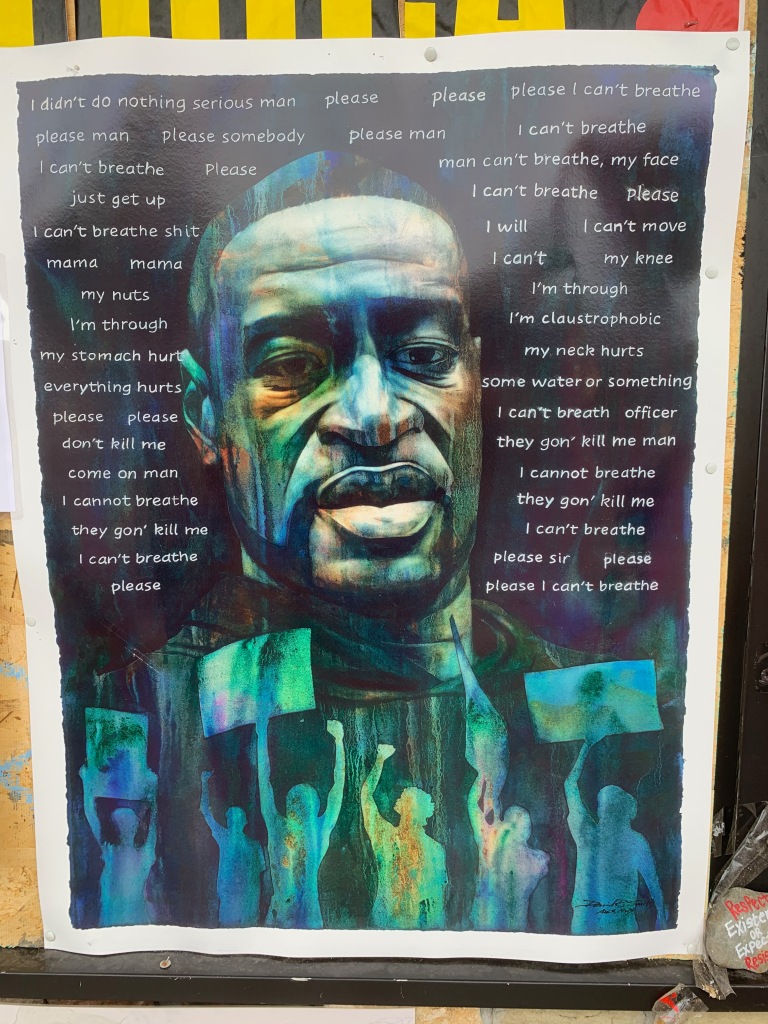
What would Jesus do?
The cultural context in Jesus’s day is not the same as today in America, and there is no one teaching or story that directly applies to the complex racial strife in America. However, as we have been saying in this series, there is material in the Gospels that pertain to racism and injustice.
In Jesus’s context, he was very concerned about the treatment of those with less power or status in society, those who were being neglected, exploited, or abused by others. Jesus did not offer systemic solutions to racism or social injustice, but, by his personal example and teaching, he provided a powerful witness to God’s compassion and concern for those at the so-called, “bottom” of society.
As another example (in addition to those we’ve already looked at), the story of Jesus and the two blind men speaks to God’s heart, values, and response to the needs of those who cry out in distress. Notice how Jesus’s behavior stands in contrast to the crowd.
There were two blind men sitting by the roadside. When they heard that Jesus was passing by, they shouted, “Lord, have mercy on us, Son of David!” The crowd sternly ordered them to be quiet; but they shouted even more loudly, “Have mercy on us, Lord, Son of David!” Jesus stood still and called them, saying, “What do you want me to do for you?” They said to him, “Lord, let our eyes be opened.” Moved with compassion, Jesus touched their eyes. Immediately they regained their sight and followed him.
Matthew 20:30-34, NRSV
In glaring contrast to those who felt they had the power and position to silence the shouting men, Jesus actually cared and listened. He stopped in his tracks. He asked questions. He wanted to know what was wrong and how he could help. And when he heard what they had to say, he was moved by compassion. Then, he took action.
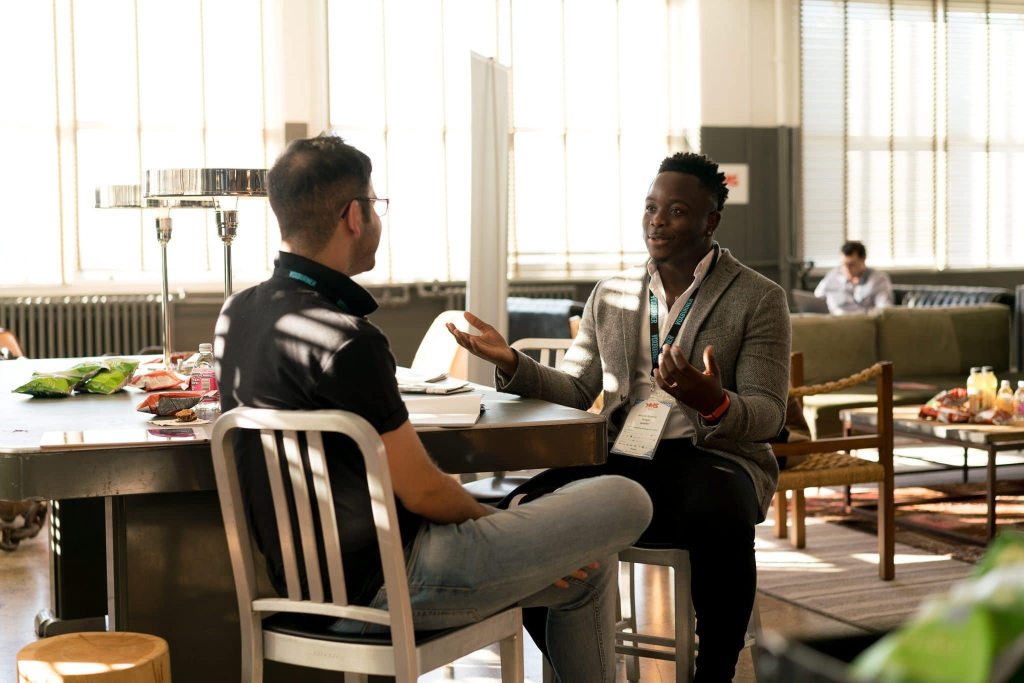
Seven practical steps you can take now
White people’s response to the protests and riots has ranged from sympathy to condemnation, but overall, my impression is that most of us (white people) care and want to help. In just Minneapolis, millions of dollars have poured into the hands of nonprofits seeking to rebuild burned out businesses and rally around black communities. Thousands of people have been volunteering to do clean up. However, at the same time, many of my white friends feel powerless to do anything of substance to address underlying issues. Sometimes, I feel that way, too.
Yet, as we grapple with how to respond to cries for justice, greater safety in black neighborhoods, and more equity and opportunity for people of color, Jesus’s compassionate response to human beings in need provides an example for us. While there are no easy, quick solutions, there are at least seven practical steps each of us can take now.
- Stop, look, and listen. Over and over again, I’m hearing pleas from black people to “see us.” In other words, African Americans are not asking white people to become “color-blind,” but to remember that when white people see a black face that that person’s experience has likely been quite different from theirs. Don’t assume you know what their experience is. If you don’t know whom to listen to, many inner-city organizations are very willing to talk with anyone who sincerely wants to hear the stories and perspective of blacks living in America.
- Hang in there, without becoming defensive or judgmental. If you are listening to someone from a different cultural background, you are likely to be upset by something that person says. If you react harshly, turn them off, walk away, or jump right into trying to counter their point of view, you will be no further ahead. Keep listening. Stephen Covey famously advocated that we should “first seek to understand, then to be understood.”
- Learn about the issues from multiple perspectives. Don’t buy into one of the extreme narratives, whether it is police-bashing and assailing white supremacy (as if all whites are conspiring against black people), on one side; or putting all the blame on the minorities for their own problems (as if the only thing black people need to do is take more responsibility), on the other. The truth is always more complicated than broad caricatures and over-generalizations. And voicing the extreme narratives only fuels the fires of conflict.
- Let your compassion move you. If you’re not already grieving over the killings and struggles of African Americans, ask God to soften your heart. Consider their suffering with greater empathy. Feel more deeply. Think of the children.
- Be patient, but diligent. Making personal, let alone societal, progress will take time and a great deal of effort. The racial and social issues that are in sharp relief right now have been centuries in the making. Stay with the process of listening and learning. Ask God to show you what you need to see in yourself, in the other person, and in our society’s structures and systems. Get ready to make changes.
- Link arms with others. Find out who’s already doing good work on the street level to address social, educational, justice, and other human welfare needs. Seriously consider the merits of proposed policy changes in local and state government. There are countless opportunities to volunteer, donate money or materials, or simply stand up and be counted.
- Start somewhere. Don’t get stuck in analysis-paralysis or freeze up because you don’t know what to think or do. If you haven’t already starting engaging in practical ways, do something today, however small. Go beyond just feeling sorry for others and confessing your sins. Get involved.
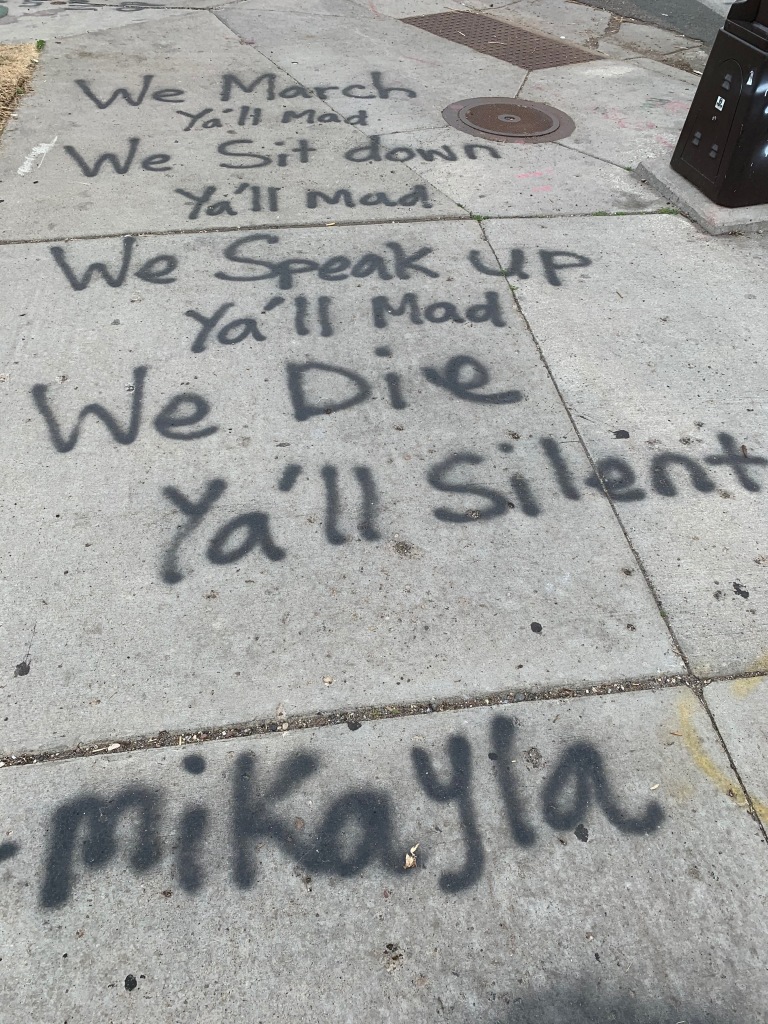
I don’t have all the answers for myself, let alone for society as a whole. But, Jesus’s teaching and example are convicting me of my own unexplored racist attitudes and are motivating me to do more than I’ve been doing, relationally and financially. It’s a start. But only a start. From here, I plan to get a better handle on public policy and societal structures that may be inadvertently working against people of color. Then comes advocacy.
How about you? What’s your next step?
Copyright © 2020 Timothy C. Geoffrion, Wayzata, Minnesota. All rights reserved to the author, but readers may freely download, print, forward, or distribute to others, providing that this copyright notice is included.
Photo Credits:
- Photos from George Floyd memorial and surrounding area, ©Timothy C. Geoffrion.
- Photos of Men talking, nappy via pexels.
